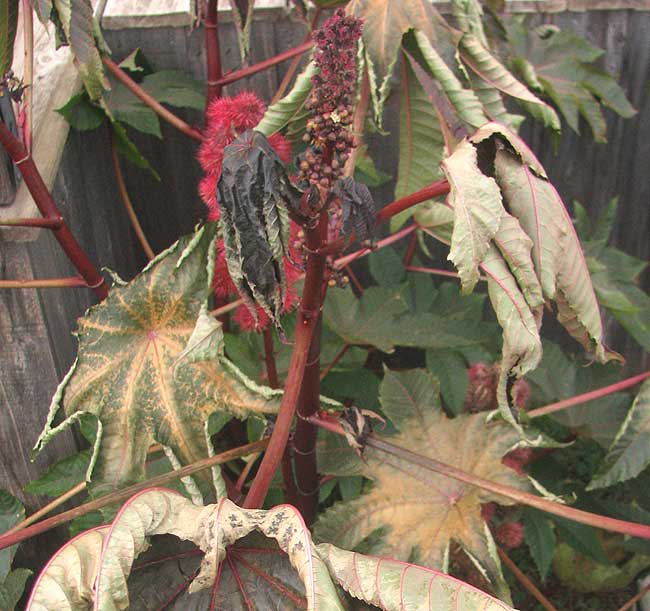Excerpts from Jim Conrad's
Naturalist Newsletter

from the November 24, 2013 Newsletter issued from the Frio Canyon Nature Education Center in the valley of the Dry Frio River in northern Uvalde County, southwestern Texas, on the southern border of the Edwards Plateau; elevation ~1750m (~5750 ft); N29.62°, W99.86°; USA
FROST DAMAGE
Last week we had our first frost, which didn't phase garden plants like parsley and mustard greens, but which killed basil and tomato plants, and severely damaged such plants as my neighbor Phred's ornamental Castor Bean plant, whose pitiful curled and blackening leaves are shown above.
Cold temperatures kill in several interesting ways.
One straightforward manner, intracellular freezing, occurs when the sharp angles of ice crystals formed inside cells damage the cell's protoplasmic structure and puncture cell membranes.
Extracellular freezing takes place because between cell walls water is relatively pure, so it forms ice at the freezing point. However, water inside cells contains dissolved salts, sugars, enzymes, etc., which act as "anti-freeze." As ice crystals form between cells, water inside the cells is drawn out through the cell walls, which causes the cells to shrink. The resulting pressures and stresses on the tissue may cause cell walls to break, killing the cells. Also, so much water may be drawn from the cells that they may stop functioning because of dehydration. It's not by accident that soon after an herbaceous leaf suffers frostbite it becomes crinkled and stiff, as if from lack of water.